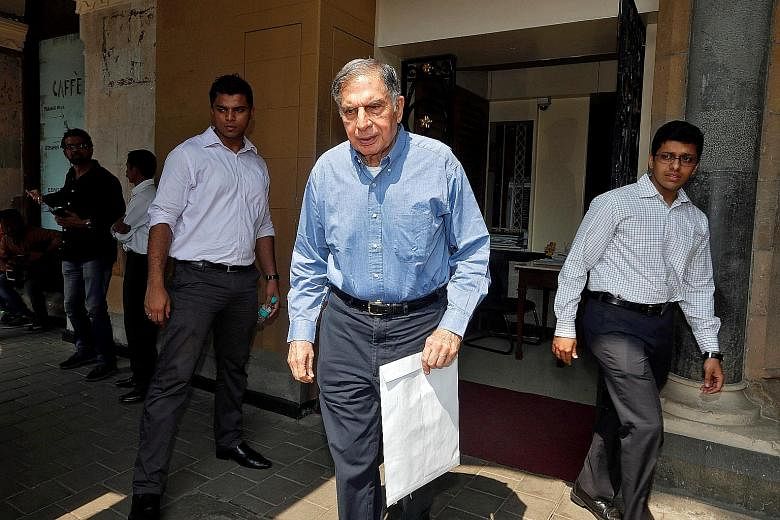Tata Group interim chairman Ratan Tata does not always come across as a typical businessman. He admits being shy, has spoken of the need to be humble and has even admitted that one of his weaknesses is not communicating enough with people.
The 78-year-old bachelor is India's most respected businessman and is recognised globally for converting Tata Group from a US$1.5 billion Indian firm into a multinational conglomerate with a revenue of US$100 billion (S$139 billion).
He received the 2007 Honorary Citizen Award from the Singapore Government and was given the Padma Vibhushan, India's second-highest civilian award, in 2008.
But some of that larger-than-life image might have taken a hit over the dramatic dismissal of Mr Cyrus Mistry, who was chosen in 2012 to carry forward Mr Tata's legacy but was suddenly sacked last week.
In a letter to employees, Mr Tata, accused by 48-year-old Mr Mistry of interference in company matters, said he had agreed to come out of retirement after four years "in the interest of stability of and reassurance to the Tata Group".
Mr Tata was brought up by his grandmother after his parents divorced when he was in primary school. He has two siblings, Jimmy and Noel. He got his bachelor of science degree in architecture with structural engineering from Cornell University and attended the Advanced Management Programme at Harvard Business School.
While he has spoken often of how he had wanted to make his life in the United States, he returned to India at his grandmother's urging.
His family initially stripped him of all privileges and sent him to work on the factory floors of Tata firms in the city of Jamshedpur, where he stayed for more than six years.
He bonded with his uncle Jehangir Ratanji Dadabhoy Tata, popularly known as JRD, over flying planes and a love for aviation.
This was translated in later years to a venture by Tata Sons - the family's holding company - and Singapore Airlines to start domestic airline Vistara and another venture with AirAsia.
Mr Tata, while a student in the US, washed planes at a flying club to get flying hours and made his first solo flight at 17. In 1991, when Mr JRD Tata retired after nearly half a century at the helm, he chose Mr Tata as his successor.
Over two decades, Mr Tata grew the conglomerate on the back of India's economic liberalisation.
The group has more than 100 companies with a presence in many countries, with interests in different areas such as consumer goods, aviation, wristwatches, cars, steel, software outsourcing, telecommunication, hotels and tea.
Mr Tata now faces the challenge of pulling the group out of the current controversy and choosing a new chairman, while convincing everyone that one of India's most stable business houses is not in trouble.
"Certainly, (this episode is) a significant blow to (Mr Tata's) image, considering the overnight change in the leadership," said Mr G. Chokkalingam, founder of Equinomics Research & Advisory.

